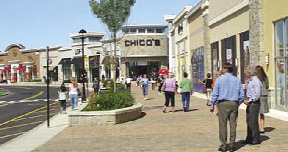According to Bob Sheehan, vice president of research at KeyPoint Partners, LLC, they have released The KeyPoint Report for Eastern Mass./Greater Boston 2007/2008, a comprehensive report on the retail real estate market in the region.
The KeyPoint Report examines supply, vacancy and absorption, retailer activity, and market composition by store size and retail categories within the region. In a change from earlier years, this year's report covers a 17-month period, from October 1, 2006 through March 1, 2008. This year's report also contains a historical trends section, examining fluctuations in retail supply from 2001 through 2007. The report indicates that the supply of retail real estate totaled 181 million s/f, a significant increase of 2.5 million s/f, or 1.4%, compared to square footage at the end of the prior study period.
"Eastern Mass. vacancy increased during the study period, but only modestly, from 6.9% to 7.0%. However, the prior study period had been burdened by approximately 1.6 million s/f of Federated/Macy's space vacated as a result of its merger with May Company," Sheehan said. Â "As of March 1, only 73,400 s/f of vacant Macy's space remained. With virtually all of this transitioning space presently either filled or redeveloped, the region still ended up with a vacancy increase of 288,000 s/f. Discounting the Macy's space, the vacancy rate in the region effectively increased from 6.1% to 6.9% by the close of the study period."
Buzzard's Bay, including the cities of Fall River and New Bedford, has the highest vacancy rate among regional submarkets at 8.2%. The southwest submarket, situated along the I-95 corridor, showed the lowest vacancy rate at 6.0%, followed by the North Shore at 6.2%. Among individual towns in the region with at least 500,000 s/f of retail space, Wareham had the lowest vacancy rate at only 1.3%. At the other end of the spectrum, Swansea led all communities with a rate of 22.1%, followed by Stoneham and Lawrence at 17.5% and 15.8%, respectively.
The economy appears to be taking the heaviest toll on smaller space users. Tenants under 2,500 s/f make up 21.4% of retail space in the region. The vacancy rate in this size category increased from 8.4% in 2006 to 9.9%. However, big box users over 100,000 s/f improved their occupancy rate. Less than 1.0% of these large retail formats were vacant.
The studied market includes 189 cities and towns in Eastern Mass., representing more than 3,500 square miles (44% of Mass.' land area) and approximately 4.8 million people (75% of the state population). The report is based on KeyPoint Partners' GRIIDÔ which maintains detailed information on virtually all retail properties located in key New England retail markets, representing more than 249 million s/f of retail space and nearly 60,300 retail establishments.
The KeyPoint Report can be accessed at http://www.keypointpartners.com/.
Tags:









